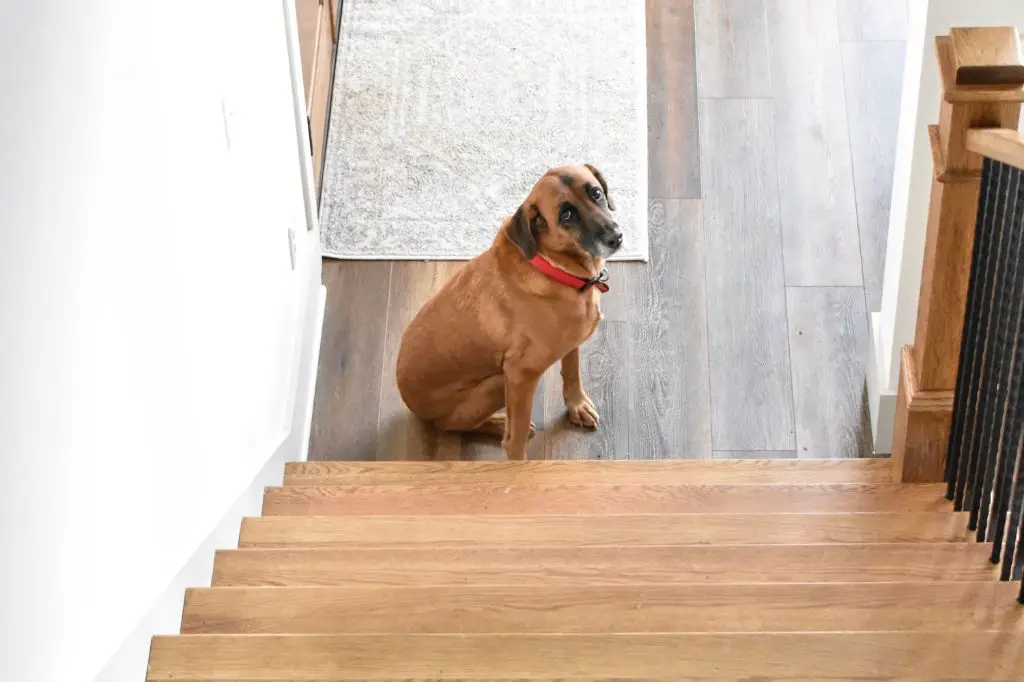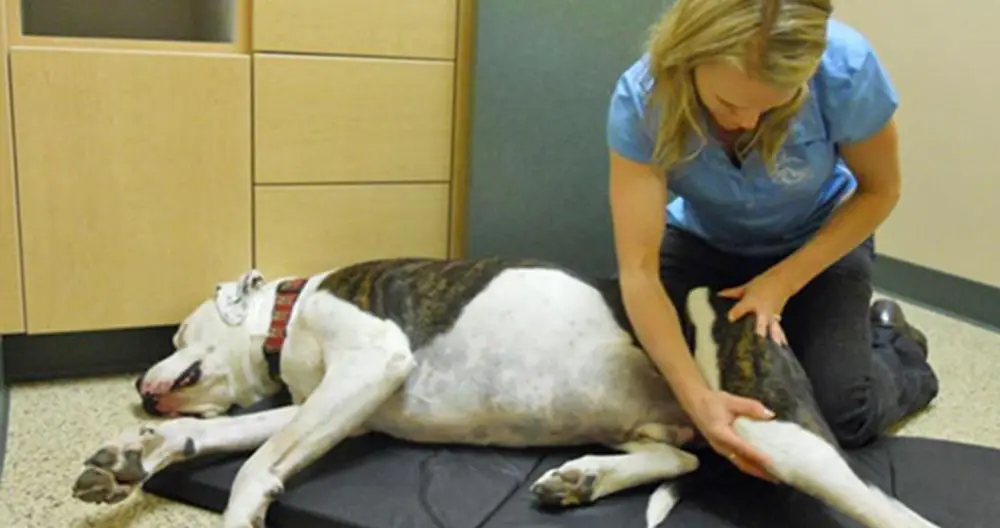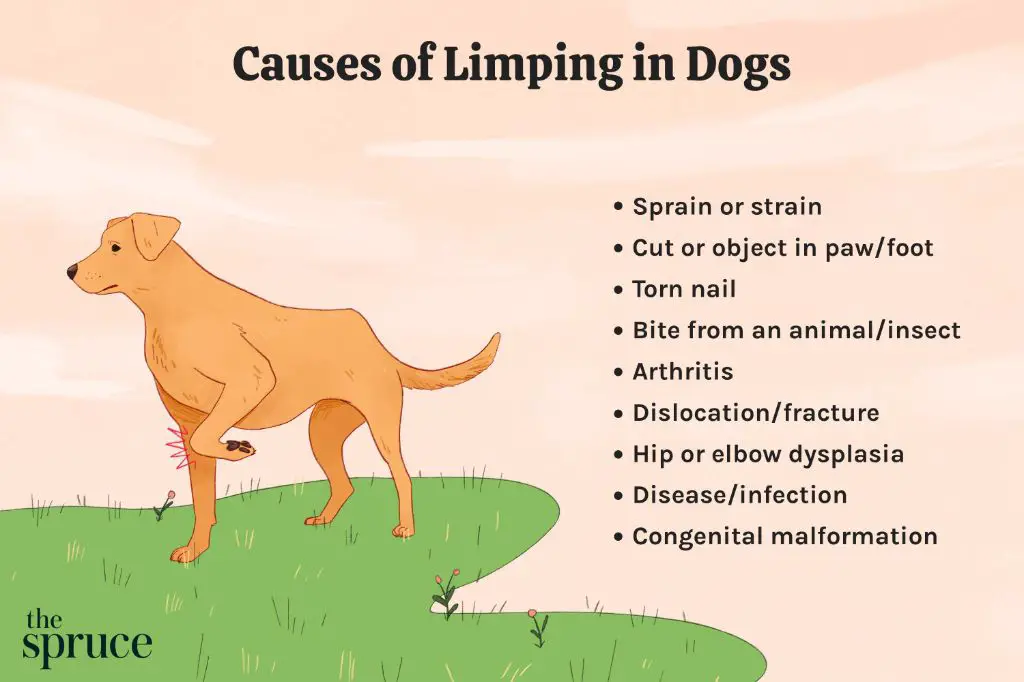Introduction
Chiropractic care has become an increasingly popular treatment option for dogs suffering from various musculoskeletal and neurological issues. Canine chiropractic focuses on examining and adjusting the spinal column and other joints to bring the body back into alignment. Proper alignment allows the nervous system to function optimally and enables the body to heal itself naturally.
In this article, we will discuss when you should consider bringing your dog to a chiropractor, what to expect during the initial appointment and follow-up visits, the techniques chiropractors use to treat dogs, home care recommendations, potential risks and side effects, and the costs associated with canine chiropractic care.
What is Canine Chiropractic Care?
Canine chiropractic care is a form of veterinary medicine focused on detecting and treating abnormalities associated with a dog’s musculoskeletal and nervous systems. The primary tools used by chiropractors are joint manipulation and mobilization to address joint restrictions, muscle tension, and nerve problems that can cause pain and reduced mobility.
Chiropractic techniques are applied to dogs to relieve pain, increase range of motion, improve posture, and support overall wellness. The goal is to locate areas where motion is limited or spinal joint dysfunction is occurring. Gentle and controlled force is applied to influence the nervous system and restore normal function. Chiropractors manually apply various treatments to the structures and tissues of a dog’s body, especially the spine.
Canine chiropractic care is considered a complementary therapy and does not replace traditional veterinary medicine. However, it can be used alongside conventional treatments. Chiropractic is not intended as a cure for disease. Rather, it focuses on allowing the body to heal itself by ensuring proper alignment of the musculoskeletal system. The nervous system controls all body systems, so realigning the spine can have beneficial effects on many aspects of a dog’s health.
When to Take Your Dog to a Chiropractor
Some signs indicating your dog may benefit from chiropractic care include:
– Difficulty moving or displaying stiffness, especially when getting up, lying down, or climbing stairs

– Lameness or limping
– Reluctance to exercise, play, or go for walks
– Yelping or showing signs of pain when touched or pet in certain areas
– Shaking or trembling legs or paws
-Slow gait or reduced range of motion in joints
– Changes in posture, such as head tilting or arching the back
– Licking, biting, or showing sensitivity around certain joints or the spine
– Muscle spasms or tension
If your dog is displaying any of these signs, especially repeatedly or for an extended time, it’s a good idea to have them assessed by a chiropractor. The chiropractor will be able to determine if subluxations or other spinal or muscular issues are causing pain or discomfort for your dog.
What to Expect at Your Dog’s First Appointment
When you take your dog to the chiropractor for the first time, the visit will likely follow this process:
Initial Consultation
The chiropractor will first talk to you about your dog’s health history, symptoms, activity levels, and any events that may have led to injury or misalignment. Be prepared to provide details about when the problem started, how it has progressed, and any other concerns.
Physical Examination
A hands-on physical exam will check your dog’s range of motion, reflexes, muscle tone, and for areas of sensitivity or pain response. The chiropractor will observe your dog’s posture and gait, feeling along the spine to find subluxations or regions of restricted movement.
Treatment Plan
Based on the consultation and exam findings, the chiropractor will map out a customized treatment plan for your dog. They will explain what spinal manipulations and techniques they will use to correct misalignments and restore mobility. The initial visit may include the first chiropractic adjustment.
The chiropractor will recommend a schedule for follow-up appointments, such as once or twice per week for 4-6 weeks. The treatment plan will be adjusted over time depending on your dog’s response and progress.
Chiropractic Techniques Used on Dogs
Chiropractors use a variety of techniques and treatments to help restore proper alignment and mobility to a dog’s spine and joints. The main technique is called spinal manipulation, which involves applying controlled force to specific vertebrae or joints. The goal is to restore normal range of motion, reduce nerve irritation, and support the body’s natural healing abilities.

Some of the common chiropractic techniques used on dogs include:
-
Spinal manipulation – The chiropractor will apply a quick, targeted thrust to areas of spinal restriction or misalignment. This helps mobilize the joint and surrounding tissues.
-
Muscle release techniques – The chiropractor may massage, apply pressure, or stretch tight muscles contributing to spinal misalignment.
-
Mobilization – Gentle, oscillating movements are used to restore joint mobility and relieve stiffness.
-
Trigger point therapy – Focused pressure is applied to tender muscle knots to relieve muscle tightness and spasms.
-
Myofascial release – Sustained gentler pressure is applied to fascia (connective tissue) to relieve tension and enhance mobility.
-
Instrument-assisted adjustment – Handheld instruments are used to apply localized and precise forces to the spine.
The chiropractor will assess the dog’s specific condition and use the techniques they deem most effective. Several short sessions may be needed initially to restore proper alignment and motion to the dog’s spine and joints.
Treatment Plan and Follow-Up Care
The initial chiropractic evaluation will help determine your dog’s treatment plan. The chiropractor will recommend the number of sessions and frequency of visits needed to help improve your dog’s condition. This depends on factors like the severity of your dog’s issues, their age and health status, and how well they respond to treatments.
For acute conditions like an injury, 1-3 sessions may be recommended. More chronic issues like arthritis or muscle stiffness often need 4-8 sessions or more. The sessions are typically scheduled about 1 week apart initially.
Your chiropractor will perform an exam and assessment at each visit to check your dog’s progress. They’ll provide manipulations or adjustments to realign the joints and spine. Each session builds on the last to improve mobility, decrease pain, and support nerve function.
After the initial set of treatments, your chiropractor may recommend follow-up or maintenance care every 4-8 weeks. This helps sustain the benefits and prevent issues from recurring. Ongoing adjustments may be advised for dogs with chronic conditions or significant conformational issues putting pressure on their joints. Your chiropractor will customize the plan based on your dog’s needs.
It’s important to follow your chiropractor’s recommended treatment plan. Skipping appointments or discontinuing care prematurely may lead to a recurrence of symptoms. Be sure to discuss the plan and commitment required so you know what to expect throughout the process.
Home Care Recommendations
After your dog’s chiropractic session, there are some at-home care tips that can help maintain the benefits of the adjustments.
Rest and reduced activity are important after the first few sessions. Your chiropractor will likely recommend restricting exercise, play time, and walks temporarily. This allows the body to heal without putting additional strain on areas that were adjusted.

Apply cold compresses to affected areas as recommended by your chiropractor to help reduce inflammation. Use an ice pack wrapped in a towel for 10-15 minutes at a time.
Make any suggested ergonomic changes at home to support good posture and spinal alignment for your dog. This may include getting orthopedic beds, using ramps, removing slick floors, and ensuring your dog does not jump on or off furniture.
Give prescription or recommended nutritional supplements if your chiropractor provides them. These may include joint supplements, fish oils, and vitamins that support nerve and muscle function.
Gently massage and stretch areas as shown by your chiropractor. This can encourage relaxation, improve range of motion, and enhance the benefits of adjustments.
Schedule follow-up appointments as directed by your chiropractor to monitor progress and receive ongoing care. Maintenance chiropractic care can help sustain your dog’s comfort and mobility.
Risks and Side Effects
While generally quite safe, chiropractic care does carry some potential risks and side effects for dogs. The most common side effect is mild soreness or stiffness after treatment. This may last for a day or two as the body adjusts to the realignment. Some dogs may also experience mild muscle spasms. This soreness is normal and should resolve quickly. Signs of soreness include stiffness, difficulty moving, whimpering, or sensitivity to touch around the adjusted area.

More serious side effects are very rare, but can include worsening pain, neurological deficits, or vertebral artery dissection from forceful neck manipulations. If your dog experiences severe neck pain, weakness, stumbling, seizures, or other concerning symptoms after an adjustment, contact your veterinarian immediately. In extremely rare cases, paralysis or even death have been reported after chiropractic treatment in dogs.
To minimize risks, it’s essential to find a licensed veterinarian certified in veterinary chiropractic care. Avoid manipulations that use excessive force or rapid twisting motions. Gentle techniques are safer and often more effective for dogs. It’s also important not to substitute veterinary care with chiropractic treatment if your dog has an underlying illness or condition requiring medical attention.
While chiropractic care can complement traditional treatment, it should not replace veterinary care when warranted. Contact your vet promptly if your dog experiences any concerning symptoms after an adjustment. Most side effects are mild, but monitoring your dog closely and choosing a skilled practitioner can help minimize risks.
Cost of Canine Chiropractic Care
The cost of chiropractic care for dogs can vary significantly depending on your location, the specific clinic, and the recommended treatment plan. However, chiropractic care is generally considered an affordable treatment option when compared to surgery or long-term medication.
Some factors that influence the cost include:
- Initial exam – Typically ranges from $45 to $125
- Follow-up visits – Usually $35 to $95 per session
- X-rays or other diagnostics – Can add $100 to $500+ depending on what’s needed
- Type of treatment techniques – Some specialized techniques may have a higher fee
- Number/frequency of treatments – Acute issues may require several weekly sessions, while maintenance is less often
- Your location – Prices are usually higher in major metro areas
- Experience level of the chiropractor – Those with more specialty experience tend to have higher fees
Many pet insurance plans do cover chiropractic treatment, but be sure to read the fine print. Coverage varies widely, with reimbursement ranging from 50% to 90% after a deductible. Maximum annual limits on chiropractic benefits are common as well.
Discuss cost upfront with your chiropractor so you know what to expect. Some clinics may offer bundled packages or discounts for prepaid treatment plans. While chiropractic care does represent an added cost, for dogs suffering from certain neuromusculoskeletal conditions it can provide significant quality of life benefits and may reduce the need for costlier medical interventions.
Conclusion
Chiropractic care can provide many benefits for dogs suffering from musculoskeletal issues, nerve problems, or pain associated with injury or aging. By undergoing regular chiropractic treatments, dogs may experience improved mobility, less pain, and enhanced overall wellbeing.
Some of the key points to remember about bringing your dog to a chiropractor include:
- Chiropractors use their hands to apply controlled force and manipulate the spine and joints of the dog.
- Multiple visits are often needed to achieve results and follow-up care may be recommended.
- Techniques like spinal manipulation, massage, stretching, and ultrasound may be utilized.
- Home exercises and suggestions for lifestyle changes may also be part of the treatment plan.
- Make sure to follow all recommendations from your veterinarian and chiropractor for care at home.
While gentle and non-invasive, chiropractic care should only be undertaken when recommended by a veterinarian. But for many dogs, seeing a chiropractor can make a world of difference, providing natural pain relief and improved mobility as they age.